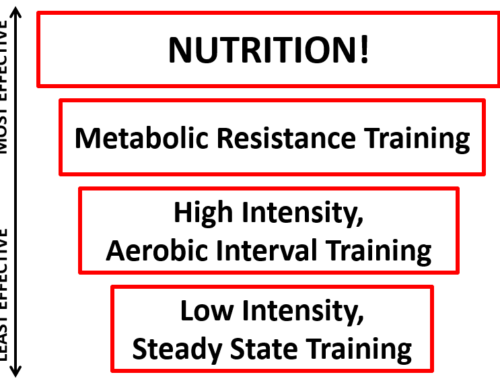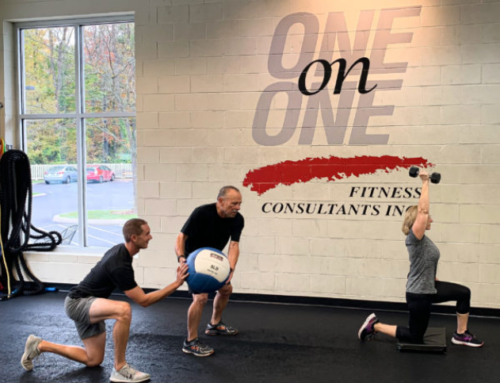By Jim Levin
Thanks to Jim for contributing to our “Focus Point of the Week” series. Jim, a One on One client, is known at Penn State University for his expertise in motivation.
Why does one person set fitness goals and successfully meet them, while another person cannot? Last week, we focused on the process, but another key factor for success is your motivation. Analyzing this motivation can give insight into how best to meet your fitness goals.
Motivation is the willingness to voluntarily put forth effort to accomplish a goal. There are two theories of motivation: operant conditioning and social cognitive. We are all familiar with operant conditioning. You repeat behaviors that have been rewarded, and you do not repeat behaviors that have been punished. Most research on operant conditioning has been done with animals, particularly rats, mice, pigeons, and dogs. Operant conditioning does a good job explaining animal behavior. However, it does not explain human behavior very well. This is because humans have the ability to reason; animals do not.
The social cognitive theory considers a person’s ability to think and reason. It defines motivation as a product of two variables: expectation of success and value. In this theory, your motivation is equal to your expectation of success multiplied by the value you put on success.
Expectation of success indicates whether you expect to be successful and why. It can be intrinsic (setting goals that are personally rewarding) or extrinsic (setting goals tied to an outside reward or avoiding punishment.) The difference between the two examples is that intrinsic expectations are controlled by the individual, while extrinsic expectations are controlled by others.
Value is the importance of the outcome to the individual. If you control the value, then it is intrinsic. (For example, “meeting my fitness goals will give me a sense of pride; I will be healthier and feel better.”) Value can also be extrinsic. (“If I meet my goals, my spouse will hopefully be proud of me.”) Again, the difference is that intrinsic value is controlled by you, while extrinsic value is controlled by someone else.
While extrinsic motivators aren’t inherently bad, the likelihood of meeting your fitness goals is increased when your motivation is intrinsic. You’re most likely to succeed when:
- you control the expectation of success;
- you attribute the success to your hard work;
- the value is important to you, not someone else.
Motivation is more likely to be intrinsic if you know what your goals are going into each session. Remember goal setting, and be sure to set goals consistent with a vision of who you aspire to be.
This week, talk to your trainer about what motivates you for success. Coming to the gym with a positive mindset, having intrinsic motivation by setting reasonable goals, and working hard so you feel proud and healthier will significantly increase the likelihood of meeting your long-term goals.
Sources
Kohn, A. (1999). Punished by Rewards. Boston, Houghton Mifflin
Levin, J. & Nolan J. (2014) Principles of Classroom Management: A Professional Decision Making Model. (7th Ed.) Boston, Pearson.
Levin, J. & Shanken-Kaye, J. (2002). From Disrupter to Achiever. Dubuque, Kendall/Hunt.
Pink, D. (2009). Drive: The Surprising Truth About What Motivates Us. NewYork, Riverhead Books.
Stipek, D. J. (2001). Motivation to Learn From Theory to Practice (4th ed.) Boston, Allyn and Bacon.




